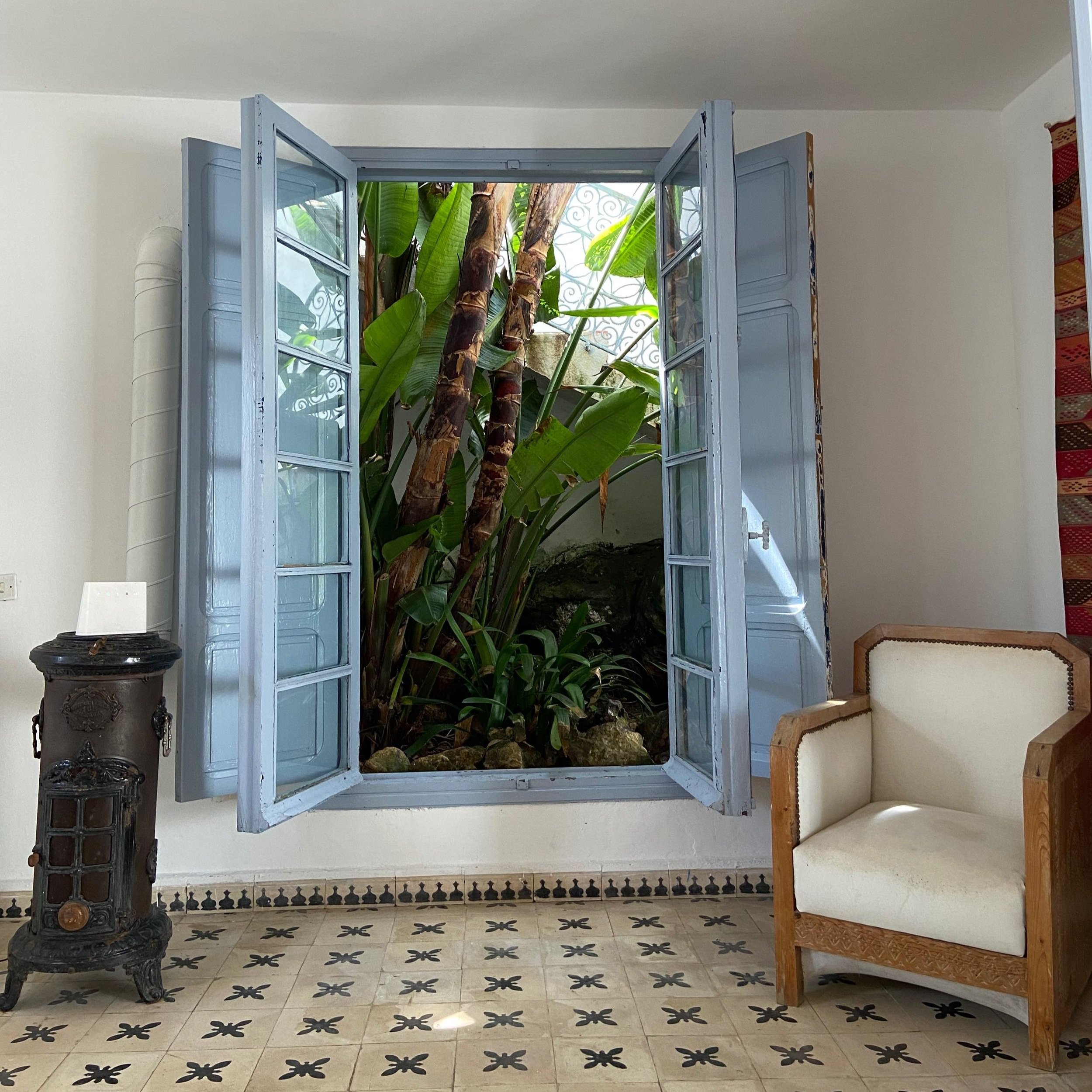A Walk through Casablanca
Jazz is playing softly in the background:
“It had to be you
I’ve wandered around, and finally found
The somebody who
Could make me true…”
The beaded tassels on the table lamps reflect light from the wrought iron lamps above.
The bartender is making mint juleps.
The air conditioner fights the sweltering heat that sneaks in whenever someone opens the front door.
It is lunchtime at Rick’s Cafe in Casablanca, the charming replica from the 1940s film whose dress code and waitlists have thwarted many Americans looking to pop in on their way in or out of the city.
Inside Rick’s, the rest of Casablanca feels far away.
Outside, we are not coddled.
Savvy travellers to Casablanca are rewarded with charming garden courtyards tucked away behind tall walls and long alleyways, flavoured dates, and hammam scrubs that remove an entire layer of skin.
The Olive Market
But as someone who loves discovering things by wandering through city streets, Casablanca does not make things easy for its travellers. The city is large: it takes about 30 minutes of walking through carpet stores, discontinuous sidewalks due to the metro under construction and closed shops to get from “the best street to see art deco construction” to the olive market.
We took a taxi back to our rental in the suburb of Tamaris and as we drove for 45 minutes along the coastline, I tried to spot the sea between the large apartment buildings being built.
At some point during the ride Casablanca became Tamaris.
As the coastline juts out to form a small peninsula, shops, resorts and colourful houses begin to line the road with greater frequency. Next to a block of modern beach houses, trash burns in an open field and fresh oysters are sold across the road from small karts and stands.
Our rental isn’t far from the water.
Standing on the sidewalk with one hand on the railing, I look left and see a block of serviced apartments, their paint peeling and the pool full of still, clear water. No one is swimming. To the right the waves are rolling onto the beach. Missing between left and right are people surfing, a beach bar or anyone trying to sell local delicacies.
We walk to dinner away from the water.
There are mostly half built structures. You could see the dramatic, angular lines indicating a future house worthy of its neighbours. But today it was just piles of concrete and wire. For every house in Tamaris there are three under construction and another three empty plots, covered in trash.
Skipping between the holes, cats, and dogs that occupy the sidewalks, you can’t tell if Tamaris is being built up or being taken apart piece by piece.
Tamaris has gems. We feasted on piping hot seafood tagines in the front yard of a family run restaurant and stayed in a sprawling tile-covered house from a fairy tale. How will this Apocalyptic Resort town evolve?
Cities and Emptiness
As I left Casablanca, I couldn’t stop wondering: Why was this entire city under construction? And what is the impact of empty neighbourhoods on the visitors passing through them and on the people living there?
I thought about this 11 years ago, walking through Thames Town, one of hundreds of China’s Ghost Cities. Thames Town is a suburb 19 miles outside of Shanghai built for a population of 10,000 people. In this neighbourhood, designed to look plucked from the UK, every apartment was instantly purchased.
When I visited, the fish and chips shop was empty. We took pictures with the Harry Potter statues. I saw one party taking wedding photos. At the time, the apartments were investments and not homes. Shop owners like the one interviewed in this video wait for things to pick up.
We are all looking for a sort of vibrancy in the cities that we live in and visit. Exactly what this looks like is difficult to put into words. An excellent article by Tristan Cleveland on the indescribable qualities of great places makes a passionate call for allowing more intuition – more nonverbal response– into city design.
“Words get projects approved, and words get attention for architects in magazines and scholarly journals. Naturally, then, architects focus on what they can describe in words. Symbolism, in particular, gets attention. But symbolism alone cannot convince anyone to walk instead of drive. It cannot create a lively street where locals feel comfortable stopping and chatting. It cannot make people feel grateful to be alive, the way a truly wonderful street can.”
As we expand our cities and make big bets on future prosperity we risk replicating these ghost towns or ghost streets. Tristan’s article suggests introducing metrics around the number of people who use a public space and the way they use it (lingering, for example) as an objective evaluation for all projects. I like this. Emptiness in cities does not invite participation, which breeds more emptiness. There are some great photos in that article. You don’t need to read the captions to guess which streets are beloved and which are not. We seem to have a good read on the types of places people want to spend time in, but it can be frustratingly hard to find these places.
My lunch at Rick’s was bittersweet. I’ve got my 1940s jazz soundtrack on spotify as my number one writing playlist now and I smile when I think of those distinct Moroccan lamps, too large for my London apartment. Why weren't there more restaurants like this? Why was the perfect ambiance only found in the cafe that is based on a fictional movie?
Rick’s Cafe, or the setting I want for every date.


